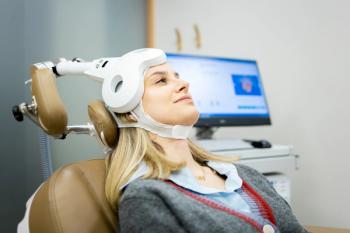
Is There Evidence to Support the Use of Kratom for the Self-Treatment of Depression?
There are no human clinical trials or even case reports to assess or describe the efficacy of this very complex botanical. Here’s what we know.
RESEARCH UPDATE
In recent years, Americans have been increasingly interested in the use of
The Google Trends report shown in the
What is kratom?
Mitragyna speciosa (kratom) is a tropical evergreen tree, part of the coffee family, and native to Southeast Asia. Historically, it has been used by indigenous populations as a stimulant to enhance stamina and reduce fatigue. In traditional medicine, it has also been explored for a multitude of conditions including pain and as treatment for heroin addiction. The fresh or dried kratom leaves are typically chewed or drank as a tea or other concoction, with lemon often added to facilitate the extraction of the active ingredients. People may add honey or sugar to mask the bitter taste as well as salt to prevent constipation.
Less commonly, the leaves can be dried and smoked. Some may also mix the leaves as part of a cocktail containing a caffeinated soft drink and codeine-containing cough syrup called “4x100.” In the United States, those seeking the use of kratom may be able to procure it as leaves (dried or crushed), extracts, powders, capsules, tablets, liquids, or gum/resin. Such commercial products very often contain other contaminants, adulterants, and bulking agents as there is no quality control. These are readily available at shops or online with a dramatic increase in importation noted since 2016. To evade customs, these products are often declared and falsely labeled similar to other new drugs of abuse.
Kratom was legal to grow and purchase in all 50 states until 2015. The DEA identified kratom as a substance of concern; however, it is not currently scheduled, despite pressure from the
How kratom works
This botanical contains a multitude of constituents, among which are the indole alkaloids. To date 25 of these alkaloids have been identified. The 2 that account for the major psychoactive activity are mitragynine (MG), which makes up the majority of the alkaloid content, and 7-hydroxymitragynine (7OHMG), which is the highly active oxidized metabolite of mitragynine. The proportions of these 25 alkaloids vary tremendously depending on a multitude of plant and environmental factors, leading to plants with diverse potencies and properties. Behaviorally, lower doses of raw plant material have stimulatory cocaine-like effects while higher doses exert opioid-like effects and analgesia.
Pharmacologically, MG and 7OHMG are the most studied and understood of the alkaloids present in kratom. Both resemble opioids in structure and bind to the mu, kappa, and delta opioid receptors; however, they additionally act on many other serotonergic, noradrenergic, and dopaminergic receptors. MG was found to be an alpha-2 adrenergic receptor agonist, a 5-HT2A, 5-HT2C, 5-HT7 receptor antagonist, and a D1, D2 receptor agonist. MG may also act as an agonist at the A2A adenosine receptors.7,8 Although the pharmacological properties of the other 25 alkaloids in the plant are unclear, a simulation model predicted they may exhibit stronger binding profiles to adrenergic and serotonergic receptors.9
What are the risks?
Kidney injury, cardiotoxicity, acute lung injury, hypothyroidism, as well as neurological effects such as seizures and cognitive impairments have been associated with
A popular belief has been that deaths resulting from use of
The risk of addiction is also increasingly evident.12 In Southeast Asia where this botanical is indigenous, dependence develops in 55% of people who regularly take kratom in as quickly as 3 months. Those new to using kratom report a 10-fold dose escalation within the first few weeks due to tolerance. As expected, on cessation such individuals are at risk for withdrawal13; following simple detox, the
Literature review
Reviews of kratom’s impact on mental health symptoms and conditions have relied heavily on the survey data mentioned previously, and reported outcomes.5,15 Although most reviews focused primarily on efficacy, some raised concerns over safety, particularly adverse effects of long-term use, such as the addictive potential.16
No clinical trials exist, regardless of randomization and placebo. No case reports describing benefit exist either. There are, however, case reports describing adverse outcomes or withdrawal from kratom in individuals who initially began using it as a way to manage mood symptoms.
There are 2 animal studies where MG alone or alkaloid extract was intraperitoneally administered while assessing various measures indicative of antidepressant effects in such models. These measures are the forced swim test, or FST (assesses absence of escape-oriented behaviors, timed from when the mouse is motionless except keeping head above water) and the tail suspension test (time from when the mouse is immobile with tape attached to its tail for suspension above ground). No long-term animal studies exist.
In 1 study, 2 different doses of MG (10 mg/kg and 30 mg/kg) and a control were intraperitoneally injected and found that both FST and tail suspension significantly reduced immobility time when compared with control.17 This finding mimics previous results seen when antidepressants were used as the test dose. Additionally, changes in the stress hormone cortisol were also similar to the antidepressant studies.
In the other animal
The bottom line
In recent years, there has been increased interest among the general public surrounding the use of kratom to self-manage a multitude of symptoms and conditions—including depressive disorders and associated symptoms. Apart from social media endorsements and user self-reports, there are no human clinical trials or even case reports to assess, or describe, the efficacy of this very complex botanical. The available survey data stem from those who endorse depression, or symptoms of such, and not clinically diagnosed depression, and the reported benefits are very much subjective.
Depressive disorders carry a high risk of morbidity and mortality and need to be addressed in a timely manner and in accordance with the highest level of evidence. Concerning the question evaluated here, the adverse effects associated with kratom are worrisome, and its use for management of major depressive disorder is an endeavor not supported by science and carries significant risks.
Dr Stanciu is assistant professor of psychiatry at Dartmouth’s Geisel School of Medicine and Director of Addiction Services at New Hampshire Hospital, Concord, NH. He is addiction section editor for Psychiatric Times.
References:
1. Henningfield JE, Grundmann O, Babin JK, et al.
2. Grundmann O. Patterns of Kratom use and health impact in the US-Results from an online survey. Drug Alcohol Depend. 2017;176:63–70.
3. Bath R, Bucholz T, Buros AF, et al. Self-reported Health Diagnoses and Demographic Correlates With Kratom Use: Results From an Online Survey. J Addict Med. 2020;14(3):244-252.
4. Coe MA, Pillitteri JL, Sembower MA, et al. Kratom as a substitute for opioids: results from an online survey. Drug Alcohol Depend. 2019;202:24–32.
5. Swogger MT, Walsh Z. Kratom use and mental health: A systematic review. Drug Alcohol Depend. 2018;183:134–140.
6. Smith KE, Lawson T. Prevalence and motivations for kratom use in a sample of substance users enrolled in a residential treatment program. Drug Alcohol Depend. 2017;180:340–348.
7. Stolt AC, Schröder H, Neurath H, et al. Behavioral and neurochemical characterization of kratom (Mitragyna speciosa) extract. Psychopharmacology. 2014;231(1):13-25.
8. Matsumoto K, Horie S, Takayama H, et al. Antinociception, tolerance and withdrawal symptoms induced by 7-hydroxymitragynine, an alkaloid from the Thai medicinal herb Mitragyna speciosa. Life Sci. 2005;78(1):2–7.
9. Ellis CR, Racz R, Kruhlak NL, et al. Evaluating kratom alkaloids using PHASE. PLoS One. 2020;15(3):e0229646.
10. Eastlack SC, Cornett EM, Kaye AD.
11. Corkery JM, Streete P, Claridge H, et al. Characteristics of deaths associated with kratom use. J Psychopharmacol. 2019;33(9):1102–1123.
12. Providers Clinical Support System. Best Practices in Managing Patients with Kratom Addiction. October 6, 2020. Accessed October 21, 2020. https://pcssnow.org/event/best-practices-in-managing-patients-with-kratom-addiction
13. Stanciu CN, Gnanasegaram SA, Ahmed S, Penders T. Kratom Withdrawal: A Systematic Review with Case Series. J Psychoactive Drugs. 2019;51(1):12-18.
14. Singh D, Müller CP, Vicknasingam BK.
15. Johnson LE, Balyan L, Magdalany A, Saeed F, Salinas R, Wallace S, Veltri CA, Swogger MT, Walsh Z, Grundmann O. The Potential for Kratom as an Antidepressant and Antipsychotic. Yale J Biol Med. 2020;93(2):283-289.
16. Taylor Levine M, Gao J, Satyanarayanan SK, Berman S, Rogers JT, Mischoulon D. S-adenosyl-l-methionine (SAMe), cannabidiol (CBD), and kratom in psychiatric disorders: Clinical and mechanistic considerations. Brain Behav Immun. 2020;85:152-161.
17. Idayu NF, Hidayat MT, Moklas MA, Sharida F, Raudzah AR, Shamima AR, et al. Antidepressant-like effect of mitragynine isolated from Mitragyna speciosa Korth in mice model of depression. Phytomedicine. 2011;18:402–407.
18. Kumarnsit E, Vongvatcharanon U, Keawpradub N, Intasaro P.
Newsletter
Receive trusted psychiatric news, expert analysis, and clinical insights — subscribe today to support your practice and your patients.













